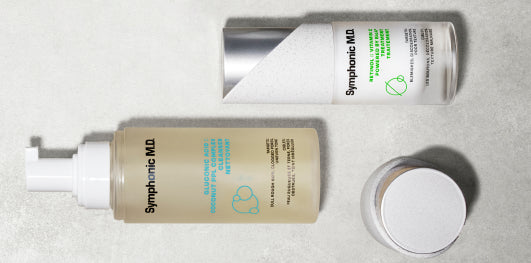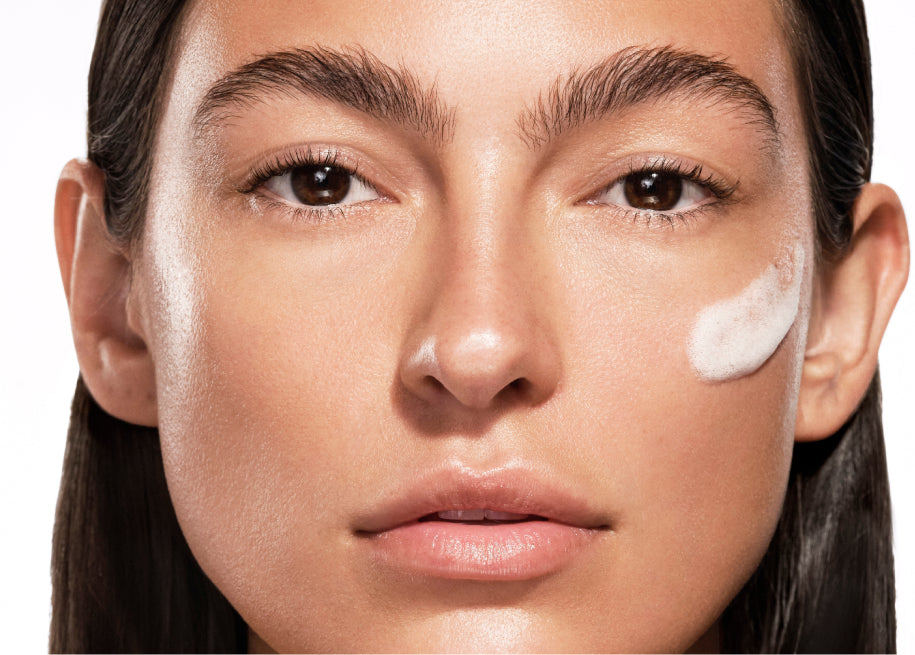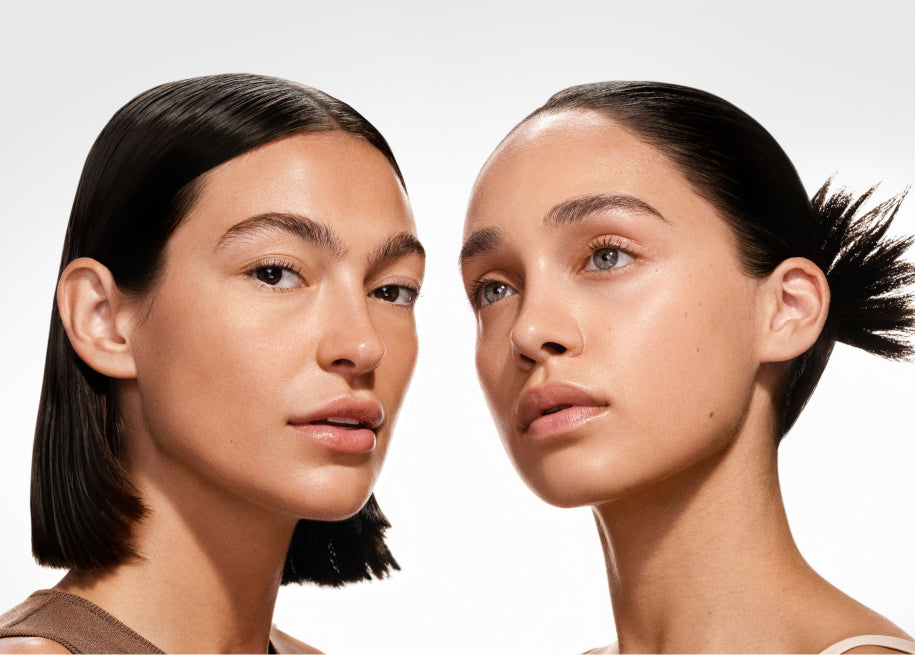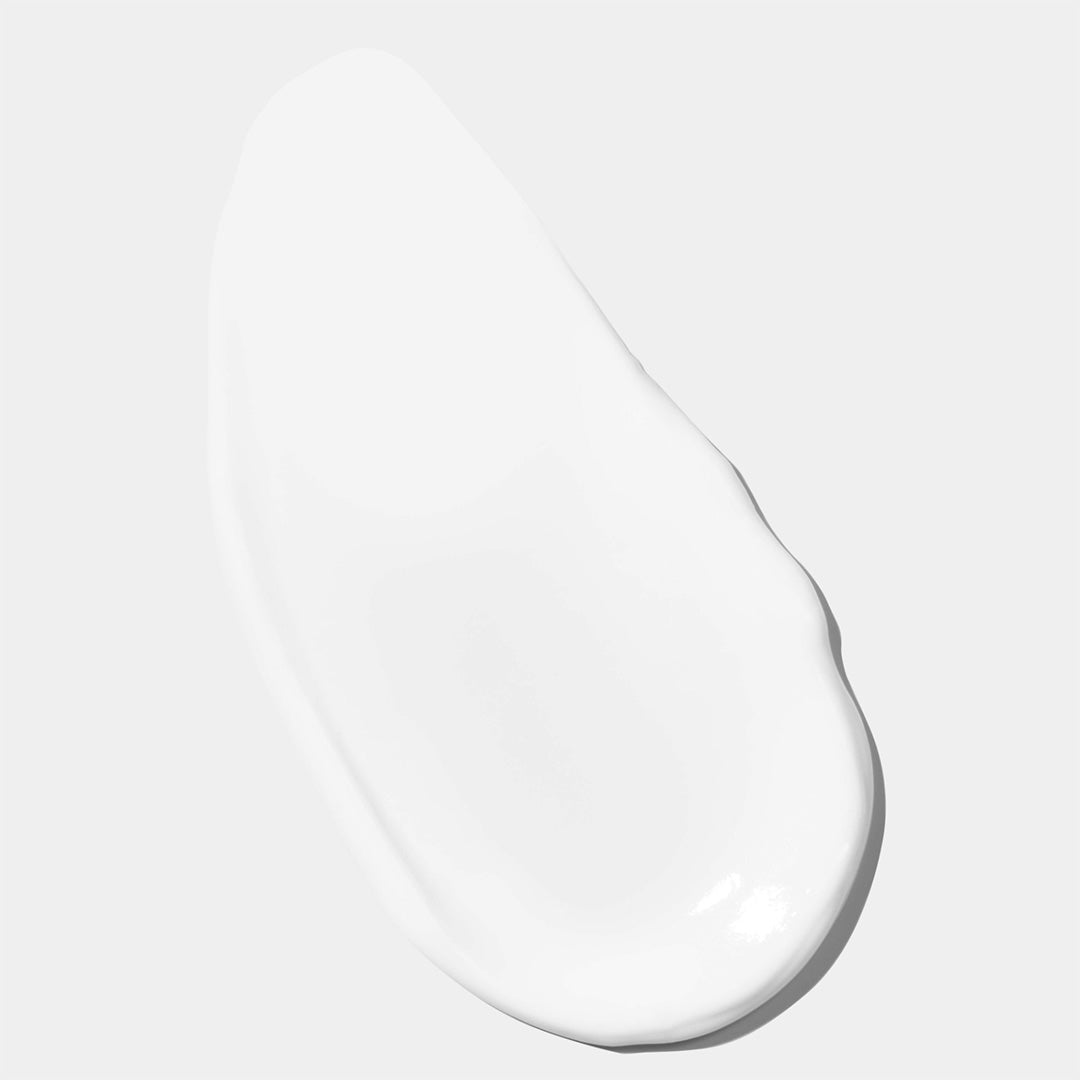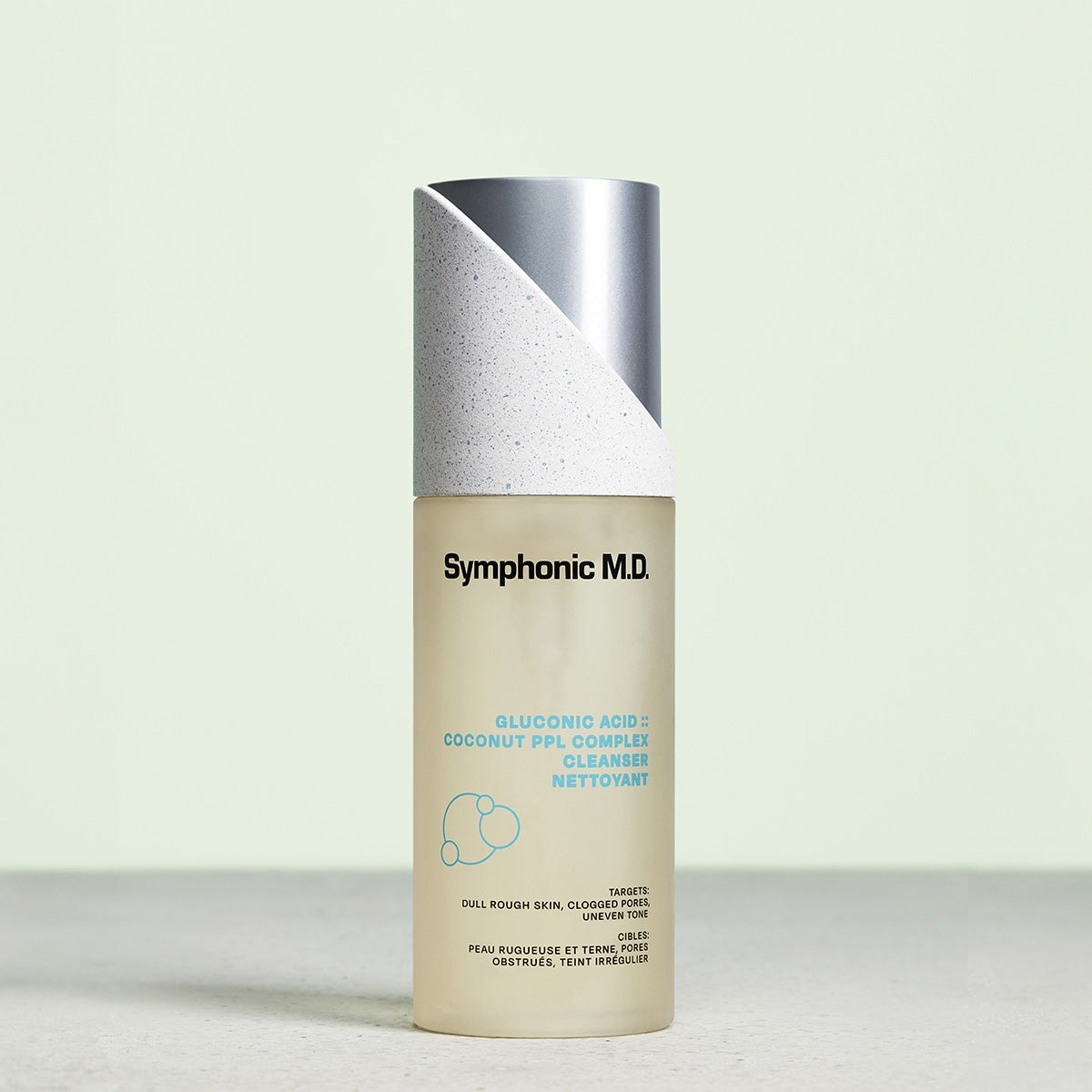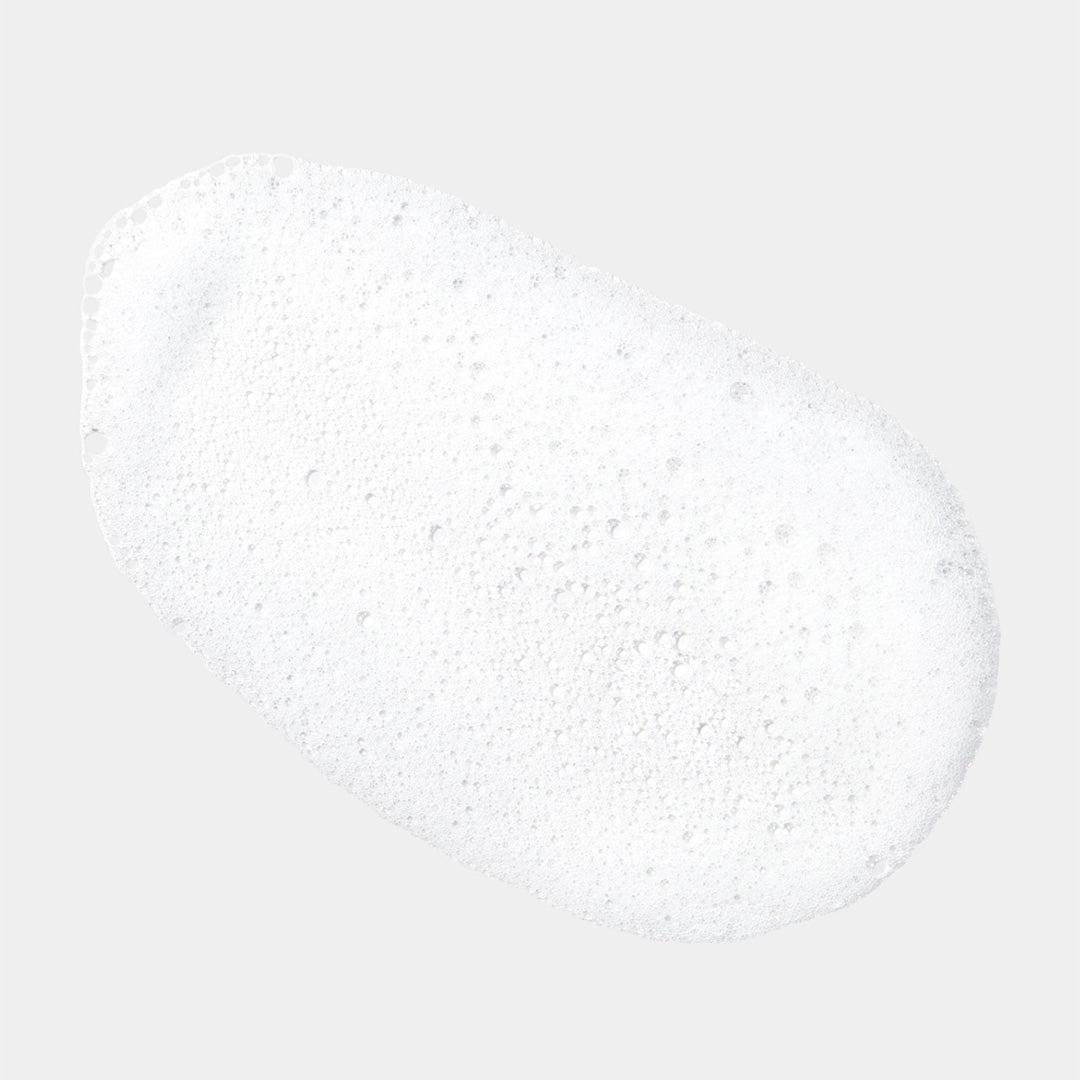Retinol is undoubtedly one of today’s most popular skincare ingredients, but it’s facing stiff competition from a relatively new entry to the market, known as azelaic acid.
Both of these active ingredients can tackle similar skin concerns, such as breakouts, hyperpigmentation, and textured skin. However, retinol is better known for its anti-aging properties, whilst azelaic acid can fight acne-causing bacteria and redness – and it’s suitable for sensitive skin types too.
In this article, we delve into azelaic acid and retinol to find out how they work, what they treat, and whether they can be combined for even better results.
What is azelaic acid?
Azelaic acid is a type of dicarboxylic acid that exfoliates the skin, calms redness and inflammation, and fights off bacteria and other harmful pathogens.
This gentle ingredient is extracted from grains such as wheat, rye, and barley, and added to skincare products for its many cosmetic benefits.
What is azelaic acid used for?
Azelaic acid helps refine the skin's surface in many ways, revealing a smoother complexion and a more even skin tone. It can specifically be used to target:
- Acne and associated scarring: Its antimicrobial properties can control the growth of acne-causing bacteria, and its ability to exfoliate and reduce inflammation can reduce symptoms and scarring.
- Hyperpigmentation: Azelaic acid inhibits the activity of melanocytes, which are the cells responsible for producing melanin, which in turn causes discoloration such as melasma or dark spots.
- Rosacea: It reduces inflammation and decreases the sensitivity that causes redness, whilst improving the overall appearance of the skin.
- Textured skin: Its gentle exfoliation properties remove dead skin cells that lead to skin texture issues, and its anti-inflammatory action reduces signs of irritation.
- Dull complexions: Azelaic acid contributes to glowing skin by exfoliating, smoothing and calming.
Azelaic acid is available in a variety of prescription-strength and over-the-counter creams, foams, and gels, so you can find a concentration that suits the severity of your individual skin condition.
If you’re in any doubt, speak to a medical professional or dermatologist to determine the appropriate strength and formulation for your needs.
This gentle ingredient is extracted from grains such as wheat, rye, and barley, and added to skincare products for its many cosmetic benefits.
Who should use azelaic acid?
Azelaic acid is a great choice for people suffering with acne and breakouts, textured or grainy skin, and a range of conditions that result in an uneven skin tone, such as hyperpigmentation.
It’s also suitable for people with sensitive skin as it can calm irritation. In fact, because it’s a gentle acid, it suits almost all skin types, and it’s completely safe for pregnant or breastfeeding women as well.
What are the side effects of azelaic acid?
Azelaic acid is one of the most gentle skincare ingredients on the market. However, as with any active skincare ingredient, some people might experience a slight reaction when using it for the first time.
These side effects can include mild irritation, redness, itchiness, stinging, tingling, or swelling. They should pass within a few uses as your skin becomes used to the new ingredient, and introducing it to your skincare routine gradually can help minimize these reactions.
However, if you experience more severe side-effects, or they last a long time, stop using it and speak to a dermatologist or medical professional.
It’s also suitable for people with sensitive skin as it can calm irritation. In fact, because it’s a gentle acid, it suits almost all skin types
What is retinol?
Retinol is part of the retinoid family of molecules – which are types of vitamin A found naturally in the human body.
Retinol helps stimulate collagen and elastic production to plump up the skin and diminish the appearance of wrinkles, making it a very popular anti-aging ingredient. It also increases cell turnover and has anti-inflammatory properties, leading to a more radiant and even skin tone.
What is retinol used for?
Retinol is an incredible ingredient that has many benefits for the skin. It is commonly used for:
- Anti-aging: It brings new skin cells to the surface for a smoother complexion, boosts collagen to diminish wrinkles, and increases elasticity to prevent sagging.
- Acne and breakouts: Retinol keeps pores unclogged, regulates sebum production, and removes dead skin.
- Hyperpigmentation. By removing dead skin cells, retinol is effective at evening out skin tone, and reducing dark spots and sun spots.
- Textured skin: Retinol’s ability to remove dead or damaged skin cells helps smooth bumpy and grainy skin textures.
- Dull complexions: By replacing old cells with fresh new ones, and enhancing collagen production, the skin appears to be brighter and more radiant.
You can buy low to moderate concentrations of retinol over-the-counter, in oils, creams, and serums.
If you have severe skin issues, you may be able to get a high-strength retinol on prescription from your doctor or dermatologist.

Who should use retinol?
Retinol is ideal for people who want to diminish or prevent signs of aging such as lines, wrinkles, and age spots. Many people begin using it in their 20s for maximum impact, but it's also incredibly effective at minimizing the signs of aging after they appear – so it’s never too late.
It’s also popular with people suffering with acne and breakouts, acne scarring or unevenly toned or textured skin.
However, although retinol can be used by most skin types, people with sensitive skin should approach it carefully by using a very low concentration, and building up the frequency of their use gradually.
It should also be avoided by women who are pregnant or breastfeeding, as high levels of vitamin A in the body can interfere with a baby’s development.
New to using retinol? Learn everything you need to know about incorporating retinol into your skincare routine in our comprehensive guide: Retinol for Beginners: What is a Good Retinol to Start With?
What are the side effects of retinol?
Because retinol is such a powerful ingredient, it’s very common to experience some irritation during the first few days or weeks. This can result in dryness, peeling, flaking, itchiness, and mild inflammation.
However, you can reduce these risks by applying a low-strength retinol to begin with, and using it sparingly until your skin becomes used to it.
What are the differences between azelaic acid and retinol?
Azelaic acid and retinol both have anti-inflammatory, exfoliating, and antioxidant properties that can help with skin issues such as aging, acne, and textured skin. However, there are a few key differences you should be aware of.
Cellular turnover
Although azelaic acid exfoliates the skin and pores to remove dead skin cells, this isn’t its greatest strength, and it is weaker than acids such as glycolic and salicylic.
Retinol, meanwhile, actually increases the turnover of cells, encouraging the skin to shed dead and damaged cells faster, and bringing new ones to the surface.
Risks of irritation
Azelaic acid is very gentle, and results in little or no irritation, making it suitable for even sensitive skin types.
Retinol, however, is commonly irritating when you first start using it, which is why it’s so important to build your use up gradually.
Anti-aging benefits
There’s no doubt that retinol is one of the best anti-aging ingredients out there. It’s very effective at reducing lines and wrinkles, and preventing new ones.
Azelaic acid can make your skin appear younger by tackling dark spots and making it more radiant, but it isn’t as effective when it comes to wrinkles.
Antimicrobial properties
Azelaic acid has antimicrobial properties that can help control the growth of acne-causing bacteria, contributing to acne management.
Although retinol may slow down sebum production, it doesn’t have these specific capabilities, so it might not be quite as effective for managing acne caused by bacteria.
Azelaic acid and retinol both have anti-inflammatory, exfoliating, and antioxidant properties that can help with skin issues such as aging, acne, and textured skin.
Can you use azelaic acid with retinol?
It is possible to use retinol and azelaic acid together, and because they address similar skin concerns, they can complement each other to provide more impactful results.
However, if you have sensitive skin, or you’re prone to rosacea, you may find retinol a little too harsh, so using azelaic acid on its own could be a better option.
How do azelaic acid and retinol work together?
These two ingredients bring different properties to the table, and they can work together to achieve even better results.
Azaelic acid, for example, can kill the bacteria that causes breakouts, whilst retinol is extremely effective at removing dead skin cells and unclogging pores. So the two work hand-in-hand to tackle the problem from different angles.
In addition, by increasing the turnover of skin cells, retinol can help azelaic acid fade acne scars and pigmentation faster.
What are the benefits of using azelaic acid with retinol?
Combining these two ingredients works particularly well if you’re targeting hyperpigmentation issues, such as age spots, melasma, and the dark spots left behind by pimples.
They also work together to efficiently improve skin texture by simultaneously increasing cell turnover whilst decreasing inflammation.
Plus, as already mentioned, they each offer their own solutions to acne, helping to manage the symptoms and reduce future breakouts.

How to use azelaic acid and retinol together
It is possible to buy products containing both retinol and azelaic acid. Alternatively, you can layer them on top of each other.
How to layer azelaic acid and retinol
Begin by applying azelaic acid to a clean face every morning, then wait 20 minutes before you apply sunscreen.
In the evening, apply the product with the thinnest consistency first (usually your azelaic acid) then a thin layer of your other product – such as our Retinol :: Vitamin C Powered by BioA3 Treatment.
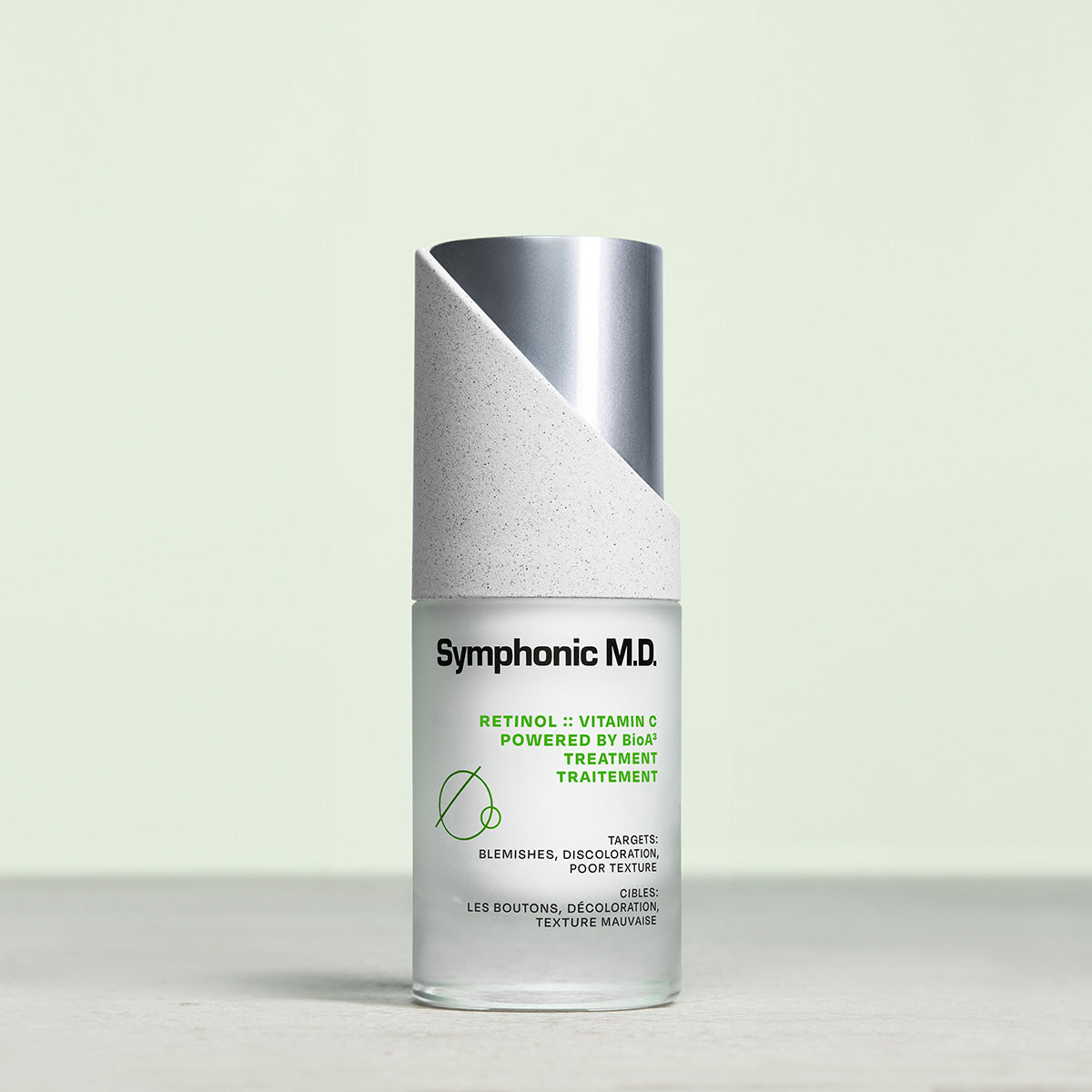
Retinol :: Vitamin C
This anti-inflammatory serum powered by BioA3 targets blemishes, tone, and texture — helping to clear bacteria and smooth skin without clogging pores.
Note that retinol should only be applied in the evenings, as it increases sensitivity to harmful UV rays.
Incorporating azelaic acid and retinol into your skincare routine
- Step 1: Always begin with a gentle cleanser that suits your skin type, such as our Gluconic Acid :: Coconut PPL Complex Cleanser.
- Step 2: Use your regular toner (if applicable) and allow it to dry.
- Step 3: Your azelaic acid product will likely be applied next, as it is usually lighter than retinol creams. Apply a thin layer and allow it to absorb into the skin.
- Step 4: You can now apply a thin layer of your retinol product across your face and neck, allowing it to dry.
- Step 5: Hydrate your skin and lock the ingredients in with a nourishing moisturizer.
- Step 6: Finish with a broad-spectrum SPF sunscreen.
Alternatively, you can combine steps 4 and 5 by using our Retinol :: Vitamin C Powered by BioA3 moisturizing serum to save that little extra (valuable) time.
Begin by applying azelaic acid to a clean face every morning, then wait 20 minutes before you apply sunscreen.
What are the side effects of mixing azelaic acid with retinol?
In general, if your skin can tolerate retinol, you are likely to have no problems combining it with azelaic acid.
When you begin, you may experience a few of the usual side effects of retinol – such as dryness, irritation, redness, and peeling. However, you can minimize this by using a low concentration, and increasing the frequency very gradually.
Having said that, these are both active ingredients, and some people could experience sensitivity to the combination. If that’s the case, try cutting down how often you use it, or using azelaic acid only in the morning and retinol at night.
Do azelaic acid and retinol cause acne?
Neither retinol or azelaic acid will clog your pores or cause acne. In fact they do quite the opposite, by removing dead skin cells and allowing your pores to breathe.
Retinol can also reduce sebum production, while azelaic acid can control the growth of acne-causing bacteria.
If you experience a breakout after using retinol, it’s simply your skin purging itself of unwanted waste, and it should pass quickly.
How often can you use azelaic acid with retinol?
You can use azelaic acid with retinol once a day. Retinol should only be applied in the evenings, so this is when you’re able to combine the two ingredients. You can also use azelaic acid on its own in the mornings.
As already mentioned, if you’re concerned about side effects, you could apply azelaic acid in the morning then retinol at night. That way, your skin can still benefit from both ingredients.
The bottom line
Azelaic acid and retinol can both be used to target similar skin issues, and they each bring unique qualities that complement each other.
Using them together can be very beneficial, and – provided your skin is tolerant to retinol – you should be able to combine them very successfully. You can build your tolerance to live ingredients by introducing low-strength concentrations gradually.
Using retinol as part of a nourishing moisturizer such as our Retinol :: Vitamin C Powered by BioA3 treatment is a great way to introduce it into your regular routine, whilst protecting it from side effects such as dryness.

